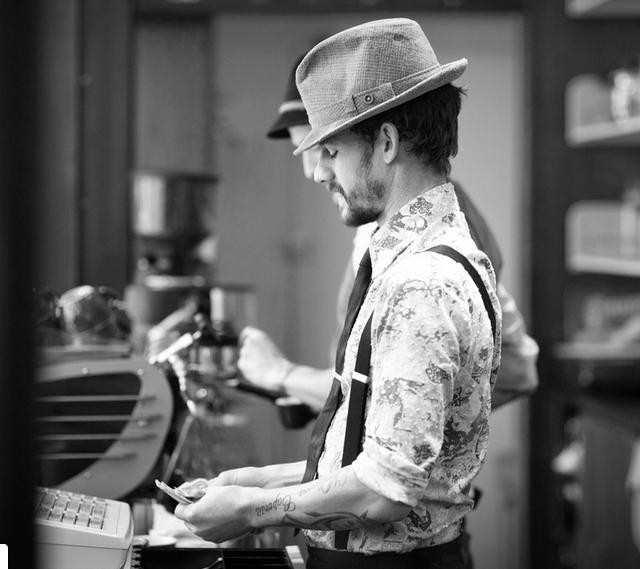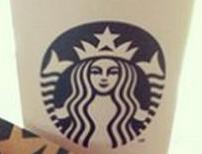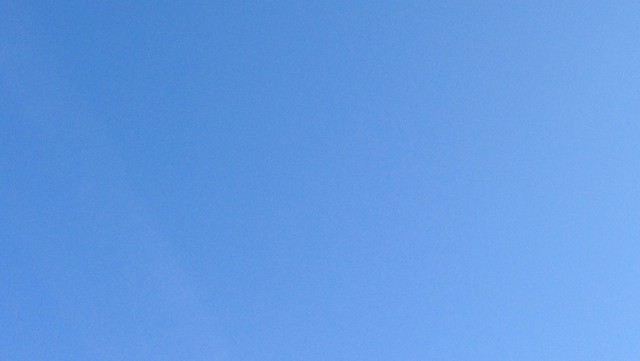Famous Humorist Writes Guide For Kiddy Fiddlers
Just me, or did Dave Barry pick an unfortunate NAMBLA-esque title for new book? pic.twitter.com/gNhn6QuRlW
— Andrew Goldman (@andrewrgoldman) October 30, 2013
What Does Your Coffee Say About You? And... Is It Something Terrible?
by Cat Ferguson

A tall man with a boy’s face stood outside Philz, a $$-on-Yelp coffee shop with a branch in the Tenderloin. He approached the sleek pre-yuppies going in and out and said, “Excuse me?”
He was white and young and fairly clean — nothing like the bums they’d ignored all day — so many stopped. When he then asked for change, they would duck and weave into the AC’d haven of $4 coffee with fresh mint sprigs. (The nice ones stumbled over an apology.) He moved on.
This Philz (a Bay Area chain) is on Van Ness and Turk, a block from Polk Street and its famous gay and transgender prostitutes. It backs up to the neighborhood with the highest density of single-room occupancy buildings/flop houses, right across from Peet’s. Every place on the block has a Foursquare mayor.
Philz’s chalkboard lists columns of cheeky names tagged with synesthetic “cupping” notes, hardly distinguishable from wine tasting vocabulary. Philtered Soul promises “an overwhelmingly satisfying aftertaste sure to please your souls’ deepest desires.” The apostrophe may or may not be a typo, but all of our souls have shared desires. Why not?

Everywhere I’ve lived, coffee has been an overt symbol of my part in gentrification.
In New Delhi I spooned up fake frappuccinos (fauxppuccinos?) in a wi-fi cafe in Hauz Khas, right at the start of its second-wave gentrification. Trendy Indians call it the Village. Construction workers climbed rickety scaffolding with no safety nets, erecting playgrounds for the rich.
In Manhattan I lived in Alphabet City and drank cappuccinos (real) across from Tompkins Square Park, site of actual class riots in the 80s. No one smashes the doors of the Christadora House anymore. My aunt owns a condo there.
In San Francisco now I watch the homeless forced out of coffee shops for the audacity of having nowhere to go. We sheltered folk all sit, shoulder blades pressed towards spines, and avoid each other’s eyes. Minutes pass. We sip our lattes.
In all these cities — other people’s cities — islands of old growth compete with the slash-and-burn of bland wealth. Fragmented forests are cut through with trendy boutiques, fusion restaurants, and of course — well, you get it.

Why coffee? For starters, it’s the second-largest traded commodity in the world, after oil. Despite heavy marketing efforts, hardly anyone picks a gas station for the brand. But they’ll administer a pistol-whipping over coffee.
Pierre Bourdieu, whose 1979 book Distinction: A Social Critique of the Judgement of Taste is rather impenetrable, had a theory I like:
The antithesis between quantity and quality, substance and form, corresponds to the opposition — linked to different distances from necessity — between the taste of necessity, which favours the most ‘filling’ and most economical foods, and the taste of liberty or luxury — which shifts the emphasis to the manner (of presenting, serving, eating, etc.) and tends to use stylized forms to deny function.
Pour-over coffee — waiting ten minutes for coffee to trickle through a specially-made Japanese funnel — comes to mind. Taste, including the mouth stuff, is completely inseparable from culture. We own no part of our aesthetics. Instead we use preferences to create and understand the social structures we are part of. Hard workers “Run on Dunkin’.” Most Bay Area snob-shops offer a personal coffee experience, each cup made just for you.
But as soon as the middle class latches onto the favorites of the rich and famous, the wealthy move on.
Starbucks worked for awhile, with its grande/venti code and delightfully artsy interior. But lattes haven’t been enough for years; even McDonald’s serves them now. Where to go but snobbier precincts?

How Did Pumpkin Become Beloved? Labor, Nostalgia, Refreshment And White Women
Johannah King-Slutzky | October 11th, 2013

Pumpkins have always been associated in turns with simplicity and decadence, but usually pumpkin-obsessed Americans choose one or the other per generation and stick with it. This anxious “work hard play hard” thing is new. Bikini bod consumes PSL “Just this once,” the apology averring her babely norm. Office maven joins office early. “Least I could do,” she opines, “is spoil myself with a pumpkin.” Other times the causality is reversed, with pumpkin as incentive, not reward.
Hand a glass of white wine to a professional wine taster — how will he rate it? Let’s say 88 on a scale of 80 to 100. Give the same wine to him again, even minutes later — the rating will be plus or minus four points, on average. After adding flavorless dye to one of the glasses, researchers at the University of Bordeaux found even experts mistook the dyed liquid for a typical red. And like non-experts, wine professionals will rate a glass of wine from a fancy bottle higher than the same wine poured from a cheap bottle. (You know, something with a bird on it.)
British psychologist Richard Wiseman found that average consumers have a 50/50 chance of guessing which wine is $5 and which is $48. Serve a non-expert a glass of wine during an fMRI and tell her it’s expensive; her brain scan suggests she’ll enjoy it much more than if she thinks it’s cheap. In short, nobody can tell the good stuff from the jug wine. (This is a modified take on William Goldman’s rule of studio filmmaking: “Nobody knows anything.”)

Charles Spence, an experimental psychologist at Oxford, says these wine-centric conclusions can likely be applied to coffee. “They both have a very complex, aromatic and multi-sensory profile of taste and texture,” he said. Spence earned a name for himself with clever studies showing that cup color changes the taste of hot chocolate, and the sound of an espresso machine affects the perceived taste of the brew.
(In case you doubt the wine versus coffee comparison, a Consumer Reports blind taste test determined that Folger’s decaf is the best of the grocery store offerings, noting it has “a touch of fruitiness and earthiness, but papery and cereal aromas make it a good candidate for milk and sugar.”)
I asked Spence, who has consulted with corporations from Starbucks to Unilever, about how to leverage cross-sensory experience, and if anyone can really identify a vanilla top note. “We are all suggestible,” he said. “In the absence of any branding or labels or descriptive sensory stuff, perhaps you can’t tell the difference.” But given a description of what you’re supposed to taste, “that allows you to sort your experience in a different way, and then maybe you really do experience those things. But you needed the label or the information or the cue or the trigger to get you there.”
In one study, undergraduates took a questionnaire that sought to determine values, including the importance of “seeking authority, wealth, social recognition, and preserving one’s public image.” Given a choice by scientists, kids who most valued social power preferred a sausage roll. Those less-inclined to value power chose the veggie alternative more. The punchline: the two rolls were identical.
In another study, researchers compared Perrier to a generic brand of mineral water and found that Perrier was favored only when the two drinks were labeled. (My personal favorite is the study that showed most people can’t tell paté from dog food.)

Ben Cushing, a sociologist at Portland State University, studies social movements, especially anti-capitalist ones. I picture him using props in class.
“This is a story that could be told through a thousand commodities,” he told me. “The coffee economy is an echo of the colonial relationships of power that led up to it. And you can draw a parallel with gentrification, where you have a colonization of low-income urban spaces by high-income professionals. It’s a different dynamic, but an expression of the same politics of inequality.”
Carrying a Philz cup through the Tenderloin, I waffle, exactly as class conscious and self-involved as I was raised to be. A part of me wants to throw it away — hide the evidence of my spending a half an hour at minimum wage on a minor buzz. Another part is quietly pleased by the attainable affluence. What a dream for marketers.
Mostly I just drink the coffee. It’s delicious.

Advertisers, of course, are keenly aware of all of this. They fund a ton of social and cognitive psychology research. (There’s literally a field called consumer psychology.) They know the cup in our hands is a visible symbol of our place in the social strata, and that our preference has almost nothing to do with flavor. Sell it right, and we’ll buy our own loyalty.
Are you a Mac or a PC? A Starbucks or a Blue Bottle? Who do you want to be when the chips are down?
By the way, our cute local chains aren’t quite ours anymore. With demand for “third wave” coffee (Starbucks was the second) growing, VCs and private equity firms can smell the blood in the water. Blue Bottle got $20 million last year, and this May, Philz got an eight-figure investment, which people pegged at between $15 and $25 million.
Philz has another flavor, “It’z the Best.” It has “a hint of dark demanding tones.” Demanding coffee. What a world.
Previously: Taking The Silver Cure: Colloidal Silver And Paranoia
Cat Ferguson has a dog, an email, and a twitter. Barista at Stumptown, in the Ace Hotel, New York City, photographed by Matt Biddulph.
New York City, October 28, 2013

★★★★ Wool felt a little itchy in the full sun. Dissolving contrails made an X in the downtown sky. It was worth chasing and re-sorting a few wind-scattered pages to get up on the roof in the afternoon light for a while, away from the still lagging office heating system. By now, the hastiness of the day’s end felt like real shortchanging. There was no hope that the pink western sky would survive the length of a subway ride. But the sky over the uptown exit was at least a cheery cobalt, something less than full night.
No Alternative... TO DEATH
You know what’s old? You, the works of art and culture that were once such important signifiers of who you thought you were and what story you wanted to tell the world about yourself, all the promise and potential that portended so many possible futures for your life, the heartbreaking realization that where you are now is about as good as it’s going to get and the sneaking suspicion that everyone around you knows how you mask the pathetic realities of your failure to meet even the most attainable goals you once set for yourself but they are too polite to say anything because it’s all just too awkward to mention. Those things are all old. But also this record. This record is old.
Can You Trust A Crying Baby?
It says something about the time in which we live where you can’t read a line like, “A video showing a baby’s emotional response to her mother’s singing has become an internet hit,” and immediately not wonder what the angle is. Like, whatever happened to that innocent era in which we could just bask in the warmth of a mother videotaping her child in tears and continuing to carry on with the behavior that makes the baby cry in the first place instead of cynically suspecting that there is something else going on, probably for profit, the way we do these days? As someone with a knee-jerk suspicion and generally low opinion of most human motivation, the fact that I know I am not the only one to greet such viral outbreaks with doubt and disgust does not, as you might expect, make me feel better about the world now that it has come around to my point of view. No, it all makes me very sad. And now I’m crying.
Smoking Helps You Look Like You've Been Around
“You know smoking doesn’t do any favors for your face — or your lungs, or your heart, or just about any other part of your body, for that matter! — but a new study of twins hints at the ways the habit makes you look older than you really are…. [The people doing the study] identified a few major areas of accelerated aging in the faces of the smoking twins: The smokers’ upper eyelids drooped while the lower lids sagged, and they had more wrinkles around the mouth. The smokers were also more likely to have jowls, according to the study, which was published today in the journal Plastic and Reconstructive Surgery.”
The Coming Sriracha Scarcity
Much worse than a world without wine would be a Sriracha shortage, because at least the wine people wouldn’t get all emo on Twitter about it.
NY1's Roger Clark Is New York City's Last Hero
by Matthew J.X. Malady
People are always saying things on the Internet all the time. But they are such teases. We like details.
So we have to ask.
Thanks for the interview @jakedobkin @gothamist — sorry about my sweating a lot — @jenchung @jenist @johndelsignore @nellcasey
— Roger Clark (@RogerClark41) October 22, 2013
So I just got back to NY1 from @Gothamist headquarters and turns out my polo shirt was inside out the whole time. Yikes!
— Roger Clark (@RogerClark41) October 22, 2013
Roger! So what happened here?
I was assigned to do a story on the Banksy phenomenon. I had been to see one of his pieces in the Bronx and was headed to Brooklyn to interview Gothamist’s publisher Jake Dobkin in Dumbo. On the way, I was starving. So I stopped at Burger King in Astoria for lunch. Lunch led to me running a little late with traffic and then parking is a pain in Dumbo, so I was getting nervous and started sweating like a pig. By the time I parked and walked to Gothamist I was drenched, and my pals over there offered me water as if I had just done a triathlon.
Does the sweating thing occur often, and what happened with the shirt?
I do tend to sweat a lot. It’s amazing, I can control it when I anchor, so I don’t have to look like Albert Brooks in Broadcast News. But I’m kind of a neurotic dude and that just leads to the sweat floodgates opening.
As for the shirt, I have to blame lack of sleep for putting the grey Champion polo from Target on inside out. It’s one of my three go-to polos. (I don’t love the whole shirt and tie thing all that much.) It’s been a crazy week working on regular stories plus a special project I am developing with some co-workers. Add to that my 2-and-a-half year-old son at home, plus my band has a show Friday night, and I have not gotten a lot of sleep. When I got back to the station, I went straight to the bathroom to “freshen up” and looked in the mirror and noticed the buttons were on the inside not the outside. I just kinda groaned and reversed it, wondering if the folks at Gothamist noticed. They probably did, but were too nice to say anything.
Lesson learned (if any)?
I guess maybe next time I’ll skip Burger King and go straight to the interview. I still was early when I got there, but the worry obviously hit my brain pretty hard. Maybe a change of clothes too?
Just one more thing.
The Gothamist folks, who I consider pals, asked about playing some Ping-Pong. I love Ping-Pong and was already sweaty anyway, but I needed to get back to Chelsea to file my story. So maybe next time some Ping-Pong and a change of clothes and a pitcher of water.
Matthew J.X. Malady is a writer and editor in New York City.
2009 Wasn't All Rampant Misery And Despair
“The last Guinness World Record set of people wearing zany costume eyewear was in 2009, when 4,436 people wore Groucho Marx spectacles in Chicago.”
